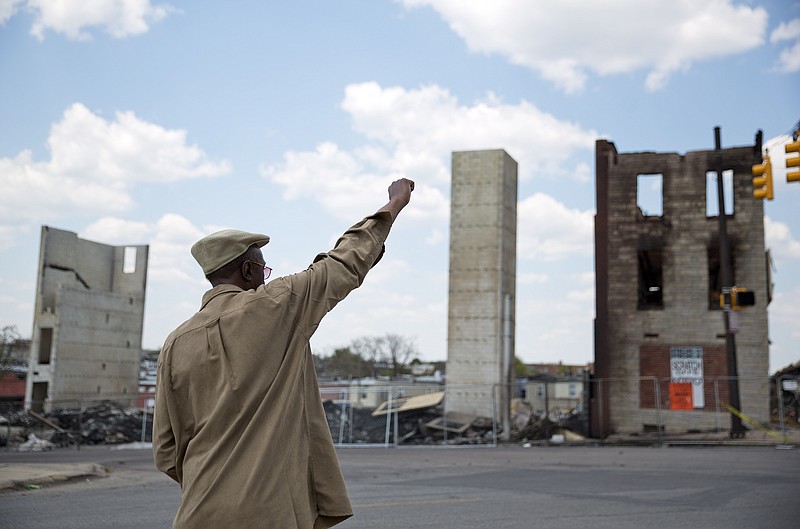If only Republicans had followed his prescription for "massive investments in urban communities," President Barack Obama said last week, Baltimore might not have become the burning, looting city it did following the death of Freddie Gray.
It's not clear how much Maryland's largest city would have received from such "massive investments" and how they would have been paid for in a deficit budget, but the president himself gave the city a huge bundle through his first-term American Recovery and Reinvestment Act.
Indeed, Baltimore received $1,831,768,487 -- nearly $2 billion -- through what became known as the stimulus plan. That, according to a Washington Free Beacon analysis, included $837,955,866 that went to a central city ZIP code. Of that amount, $467.1 million went for investments in education and $26.5 million for crime prevention.
The education money was to "improve teaching and learning for students most at risk of failing to meet State academic achievement standards." The crime money was to combat gang activity and provide community support for at-risk juveniles.
Obama, naturally, did not mention in his Baltimore rhetoric how much the administration already had invested in the city that saw 15 burned buildings, 144 destroyed vehicles, 20 injured police officers and more than 235 arrests following Gray's death.
However, he did note that "a bunch of my agenda ... would make a difference right now."
At some point, you are left wondering how much money is enough when the people Obama would want in place -- Democrats -- have led the city for 50 years, have represented the city in Congress for more than 60 years and have governed the state for 81 of the past 100 years and 41 of the past 46 years.
Democrats run the city of Baltimore (including every single City Council member), its unions, its schools and even the police force that has been excoriated in Gray's death. The president won 87.4 percent of the vote inside the city limits in 2012. You could hardly find a city more in line with liberal policies.
So, Obama's blather about Republican policies having anything to do with the city's problems rings hollow.
A dependency society, failed schools and union corruption might be better areas to examine.
Martin O'Malley, a former Baltimore mayor and Maryland governor, is soon likely to announce his candidacy for the 2016 Democratic presidential nomination. Like Obama, he also tried to deflect the blame last week for the violence, pointing fingers at structural problems in the economy, outsourcing and a failure to invest in infrastructure.
But as a resident who met the former governor at an inner-city food drive put it last week, cited by Washington Post blogger Marc A. Thiessen, "He's walking into the aftermath of his legacy."
Sadly, evidence cited by the blogger offers an even more insightful picture of the city and the Sandtown-Winchester community where the rioting occurred.
* While the national poverty rate is 14.5 percent, virtually unchanged from the redistribution programs begun nearly 50 years ago by President Lyndon Johnson to eliminate poverty, the poverty rate in Baltimore is 24 percent of all residents and 35 percent of children.
* "Among the nation's 100 largest counties," according to The New York Times analysis of a new study, "the one where children face the worst odds of escaping poverty is the city of Baltimore."
* Baltimore public schools in 2014 ranked third in the country in per-pupil spending, behind only New York and Boston, but 55 percent of Baltimore fourth-graders scored "below basic" in reading and 54 percent of eighth-graders scored "below basic" in math, according to the 2013 National Assessment of Educational Progress.
* City officials recently "injected $130 million into the [Sandtown-Winchester] community in a failed effort to transform it," according to The Washington Post, but the community has a murder rate double that of Baltimore.
What occurred in Baltimore is a Democratic legacy but also, as O'Malley said, "a wake-up call for the entire country." Endemic in that wake-up alarm -- for the Maryland metropolis once known as the Charm City and for long-Democratic-run cities like Detroit, St. Louis and Philadelphia -- is the mandate to stop doing the same things you've always done. They're not working.
